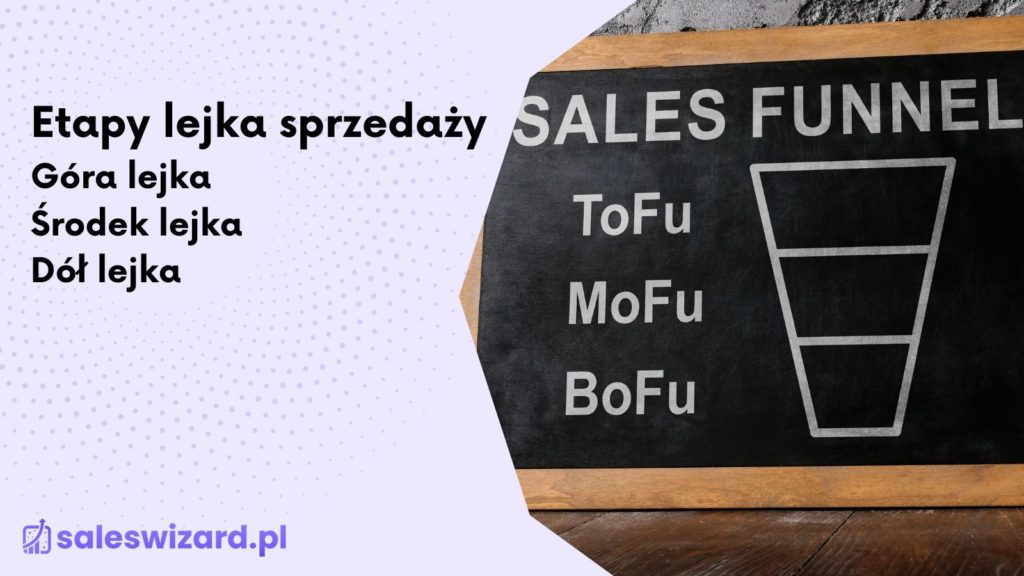Funnel stages: top, middle and bottom of the sales funnel

The sales process is a key element of any business strategy, and its effectiveness often determines a company’s success or failure in the market. In order to better understand this process, the concept of a sales funnel is used, which depicts the various stages a potential customer goes through – from the moment of first contact with a brand to making a purchase. The sales funnel can be divided into three main parts: top, middle and bottom, each of which has a specific role and requires appropriate marketing and sales activities. In the following, the different stages of the sales funnel will be discussed in detail, starting from the top, through the middle and down to the bottom, allowing you to better understand their function and importance in the sales process.
Try out sales funnels in SalesWizard CRM!
Learn more about sales funnels and process handling in CRM or schedule a consultation.
Top of the sales funnel (ToFu)
The top of the sales funnel plays a key role in the sales process, as it is at this stage that the first contact with a potential customer occurs. The top of the funnel includes marketing and sales activities to build brand awareness and interest in an offer. Proper management of the top of the funnel allows the acquisition of more leads, which can then be converted into customers.
Important aspects of the top of the sales funnel are:
- Generate traffic to the website or other places where the offer is presented (e.g., stationary store, trade shows, events).
- Using a variety of communication channels, such as online advertising, content marketing, social media, email marketing and whisper marketing.
- Segment the market and reach the right audience that is most likely to be interested in the offer.
- Create attractive and valuable content that will attract the attention of potential customers and build trust in the brand.
- Monitor the effectiveness of marketing and sales activities to optimize strategies and increase lead acquisition.
It is worth noting that the top of the sales funnel does not end with acquiring leads. The next step is to classify and nurture them, a process in which potential customers are gradually convinced to buy by providing them with valuable information, solving their problems and building relationships. Only after passing through these stages can leads be converted into customers, which is the bottom of the sales funnel.
In summary, the top of the sales funnel is crucial in the sales process, as it is at this stage that the first contact with a potential customer occurs. Managing the top of the funnel involves marketing and sales activities to build brand awareness and interest in the offer. The right approach to the top of the funnel allows for the acquisition of more leads, which can then be converted into customers in the later stages of the sales funnel.
The middle of the sales funnel (MoFu)
The middle part of the sales funnel, also known as “lead nurturing,” plays a key role in the sales process, connecting the stages of acquiring leads and converting them into customers. At this stage, the goal is to sustain the interest of potential customers and build a relationship with them that leads to a purchase.
Important aspects of the middle part of the sales funnel are:
1. nurturing leads: Regular delivery of valuable content that answers questions and solves problems for potential customers. This can include webinars, newsletters, e-books, case studies or blog articles.
2 Personalize communications: Tailor content and offers to the specific needs and behaviors of leads. Using CRM systems and marketing automation allows for more effective targeting of messages.
3 Building trust: Presenting social proof, such as customer reviews, case studies or certifications, which enhance brand credibility and help build trust.
4 Customer education: Conduct educational campaigns that help leads better understand the products or services offered and their benefits. Education contributes to informed purchasing decisions.
5. Segmentation of leads: Accurately segmenting leads based on their behavior, needs and level of engagement. This enables more precise targeting of offers and messages.
Bottom of the sales funnel (BoFu)
The bottom of the sales funnel is the stage where we focus on converting previously acquired leads into customers. Unlike the top of the funnel, where we focus on building brand awareness and interest in an offer, the bottom of the funnel is aimed at increasing conversions and sales of products or services. Proper management of the bottom of the funnel allows you to increase the efficiency of the sales process and achieve better business results.
Important aspects of the bottom of the sales funnel are:
- Nurturing leads, that is, providing valuable information, solving problems and building relationships with potential customers.
- Personalize communications and offers to better match the needs and expectations of each lead.
- Using sales techniques such as cross-selling, up-selling or promotions to encourage purchases.
- Monitor and analyze data to optimize the sales process and better understand customer needs.
- Work with the customer service department to provide quality service and maintain customer relationships after purchase.
It is worth noting that the bottom of the sales funnel does not end with converting leads into customers. The next step is to maintain customer loyalty and keep customers satisfied, which can lead to repeat purchases and brand recommendations to others. Proper management of the bottom of the sales funnel allows you to build lasting relationships with customers and achieve long-term business success.
In summary, the bottom of the sales funnel plays a key role in the sales process, as it is at this stage that the conversion of previously acquired leads into customers takes place. Managing the bottom of the funnel includes nurturing leads, personalizing communications and offers, applying sales techniques, and monitoring and analyzing data. The right approach to the bottom of the funnel allows you to increase the efficiency of the sales process and achieve better business results.
